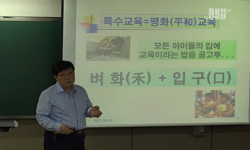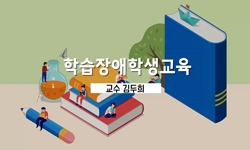본 연구의 목적은 범이론적 모델을 바탕으로, 장애 학생들에게 근거에 입각한 수업을 진행하기 위한 체육교사의 의 지와 교수법을 측정할 수 있는 측정도구를 개발하고 검증하는 데 있다. ...
http://chineseinput.net/에서 pinyin(병음)방식으로 중국어를 변환할 수 있습니다.
변환된 중국어를 복사하여 사용하시면 됩니다.
- 中文 을 입력하시려면 zhongwen을 입력하시고 space를누르시면됩니다.
- 北京 을 입력하시려면 beijing을 입력하시고 space를 누르시면 됩니다.

Development and Evaluation of the Evidence-based Practice Instrument for Physical Educators Teaching Students with Disabilities
한글로보기https://www.riss.kr/link?id=A106401633
- 저자
- 발행기관
- 학술지명
- 권호사항
-
발행연도
2014
-
작성언어
English
- 주제어
-
KDC
692.905
-
등재정보
KCI등재
-
자료형태
학술저널
- 발행기관 URL
-
수록면
27-45(19쪽)
-
KCI 피인용횟수
0
- DOI식별코드
- 제공처
-
0
상세조회 -
0
다운로드
부가정보
국문 초록 (Abstract)
본 연구의 목적은 범이론적 모델을 바탕으로, 장애 학생들에게 근거에 입각한 수업을 진행하기 위한 체육교사의 의 지와 교수법을 측정할 수 있는 측정도구를 개발하고 검증하는 데 있다. 미국 북서부 지역 초.중등학교에서 근무하는 148명의 체육교사들이 본 연구에 참여하였다. 범이론적 모델의 세 가지 개념(자기효능감, 의사결정균형, 변화과정)을 측정하는 문항들의 판별기능을 평가하기 위해 문항분석이 사용되었고, 그 이론적 구조는 확인요인분석을 통해 평가되 었다. 범이론적 모델의 핵심개념인 변화의 단계는 일원분산분석과 다변량분산분석을 사용하여 위의 세 개념들과 비교 되었다. 평가도구의 모든 항목들에 대한 문항판별값과 내적 일치도 값은 우수하거나 매우 우수하게 나타났고, 합당한 설명량(다중상관자승)과 요인적재치를 보였다. 범이론적 모델의 자기효능감, 의사결정균형, 변화과정 구조모형은 부분 적인 타당도가 수립되었다. 향후 본 측정도구의 타당도를 높이기 위해, 큰 표본을 이용한 교차검증법이 유망할 것이다.
다국어 초록 (Multilingual Abstract)
The purpose of this study was to develop and validate an instrument based on the Transtheoretical Model (TTM) for assessing physical educators’ intentions and teaching behavior to implement evidence-based practice for students with disabilities. Stu...
The purpose of this study was to develop and validate an instrument based on the Transtheoretical Model (TTM) for assessing physical educators’ intentions and teaching behavior to implement evidence-based practice for students with disabilities. Study participants were 148 physical education teachers who were recruited from both elementary and secondary schools in Northwest regions of the U.S. Item analysis was conducted to evaluate appropriate discriminate functions for items measuring three TTM constructs (self-efficacy [SE], decisional balance [DB], and processes of change [POC]). Internal structures of the TTM items were examined by confirmatory factor analyses. The responses from stage of change were compared to the three TTM constructs. Separate one-way analyses of variance and multiple analyses of variance on each construct by stage were conducted to assess differences among the stages of change. Item discrimination values for all items were good to very good, except for two negative DB items that were deleted. Internal consistencies of SE, DB, and POC were found to be good to excellent. Confirmatory factor analyses showed reasonable squared multiple correlation and factor loading estimates. Three structural models were partially supported by goodness of fit indices. Cross-validation with a large sample size will be desirable to refine this measurement system in the future studies.
참고문헌 (Reference)
1 Block, M. E., "Why all students with disabilities should be included in regular physical education" 10 (10): 17-24, 1994
2 Reed, G. R, "What makes a good staging algorithm: Examples from regular exercise" 12 (12): 57-66, 1997
3 Davies, P. T., "What is evidence-based education?" 47 (47): 108-121, 1999
4 Plotnikoff, R. C., "Validation of the decisional balance scales in the exercise domain from the transtheoretical model : A longitudinal test" 5 (5): 191-206, 2001
5 Marcus, B. H., "The stages and processes of exercise adoption and maintenance in a worksite sample" 11 : 386-395, 1992
6 Prochaska, J. O., "Stages of change" 38 (38): 443-448, 2001
7 Ciccomascolo, L., "Setting the stage for physical activity for secondary students" 77 (77): 34-39, 2006
8 Driver. S., "Psychometric properties and analysis of the physical activity social influence scale for adults with traumatic brain injuries" 24 : 160-177, 2007
9 Nigg, C. R., "Processes of exercise behavior change: Redeveloping the scale" 1999
10 U. S. Congress, "No Child Left Behind Act of 2001" Author 2001
1 Block, M. E., "Why all students with disabilities should be included in regular physical education" 10 (10): 17-24, 1994
2 Reed, G. R, "What makes a good staging algorithm: Examples from regular exercise" 12 (12): 57-66, 1997
3 Davies, P. T., "What is evidence-based education?" 47 (47): 108-121, 1999
4 Plotnikoff, R. C., "Validation of the decisional balance scales in the exercise domain from the transtheoretical model : A longitudinal test" 5 (5): 191-206, 2001
5 Marcus, B. H., "The stages and processes of exercise adoption and maintenance in a worksite sample" 11 : 386-395, 1992
6 Prochaska, J. O., "Stages of change" 38 (38): 443-448, 2001
7 Ciccomascolo, L., "Setting the stage for physical activity for secondary students" 77 (77): 34-39, 2006
8 Driver. S., "Psychometric properties and analysis of the physical activity social influence scale for adults with traumatic brain injuries" 24 : 160-177, 2007
9 Nigg, C. R., "Processes of exercise behavior change: Redeveloping the scale" 1999
10 U. S. Congress, "No Child Left Behind Act of 2001" Author 2001
11 Miller, W. R., "Motivational interviewing: Preparing people to change addictive behavior" Guilford 1991
12 U. S. Congress, "Individuals with Disabilities Education Act(First Session ed" 1997
13 National Council on Disability, "Improving educational outcomes for students withdisabilities" National Council on Disability 2004
14 Kristal, A. R., "How can stages of change be best used in dietary interventions?" 99 (99): 679-684, 1999
15 Slavin, R. E., "Evidence-based education policies : Transforming education practice and research" 31 (31): 15-21, 2002
16 Yun, J., "Estimating measurement validity: A tutorial" 19 : 32-47, 2002
17 Rossi, J. S, "Development of a hierarchical multidimensional measure of exercise self-efficacy" 1998
18 Driver, S., "Development of a conceptual model to predict physical activity participation in adults with brain injuries" 25 : 289-307, 2008
19 Takeuchi, M. T., "Development and validation of states of change questions to assess consumers’ readiness to use a food thermometer when cooking small cuts of meat" 106 (106): 262-266, 2006
20 Laffrey, S. C., "Decisional balance for exercise: Adaptation of an instrument for older Mexican American women" 28 : 388-397, 2005
21 Prochaska, J. O., "Changing for good: A revolutionary six-stage program for overcoming bad habits and moving your life positively forward" HarperCollins 1994
22 Prochaska, J. M., "Assessing readiness for advancing women scientists using the transtheoretical model" 54 : 869-880, 2006
23 Prochaska, J. M., "Assessing emotional readiness for adoption using the transtheoretical model" 27 : 135-152, 2005
24 Spencer, L., "Applying the transtheoretical model to exercise : A systematic and comprehensive review of the literature" 7 (7): 428-443, 2006
25 Noia, J. D., "Application of the transtheoretical model to fruit and vegetable consumption among economically disadvantaged African-amrican adolescents:Preliminary findings" 20 (20): 342-348, 2006
26 Jones, F., "Adherence to an exercise prescription scheme : The role of expectations, self-efficacy, state of change and psychological well-being" 10 : 359-378, 2005
27 Block, M. E., "A teacher’s guide to including students with disabilities in general physicaleducation (3rd ed.)" Brooks 2007
28 Slavin, R. E., "A reader’s guide to scientifically based research" 60 (60): 12-16, 2003
29 Yun, J., "A quantitative approach to movement skill assessment for children with mental retardation" 21 : 269-280, 2004
30 Xiao, J. J, "A consumer education programme based on thetranstheoretical model of change" 28 (28): 55-65, 2004
동일학술지(권/호) 다른 논문
-
2014 브라질월드컵에 나타난 경기 중 이동거리 및 움직임강도 비교 분석
- 한국체육측정평가학회
- 홍성진
- 2014
- KCI등재
-
- 한국체육측정평가학회
- 강은정(Eun Jeong Kang)
- 2014
- KCI등재
-
어린이 신체활동 강도 추정을 위한 가속도계 기준치의 정확도
- 한국체육측정평가학회
- 이미현(Mi Hyun Lee)
- 2014
- KCI등재
-
- 한국체육측정평가학회
- 김한별(Han Byul Kim)
- 2014
- KCI등재
분석정보
인용정보 인용지수 설명보기
학술지 이력
| 연월일 | 이력구분 | 이력상세 | 등재구분 |
|---|---|---|---|
| 2022 | 평가예정 | 재인증평가 신청대상 (재인증) | |
| 2019-01-01 | 평가 | 등재학술지 유지 (계속평가) |  |
| 2016-01-01 | 평가 | 등재학술지 유지 (계속평가) |  |
| 2012-01-01 | 평가 | 등재 1차 FAIL (등재유지) |  |
| 2009-01-01 | 평가 | 등재학술지 선정 (등재후보2차) |  |
| 2008-01-01 | 평가 | 등재후보 1차 PASS (등재후보1차) |  |
| 2007-01-01 | 평가 | 등재후보 1차 FAIL (등재후보1차) |  |
| 2005-01-01 | 평가 | 등재후보학술지 선정 (신규평가) |  |
학술지 인용정보
| 기준연도 | WOS-KCI 통합IF(2년) | KCIF(2년) | KCIF(3년) |
|---|---|---|---|
| 2016 | 1.12 | 1.12 | 1.19 |
| KCIF(4년) | KCIF(5년) | 중심성지수(3년) | 즉시성지수 |
| 1.2 | 1.2 | 1.171 | 0.25 |




 KCI
KCI DBpia
DBpia






